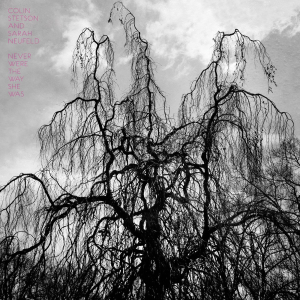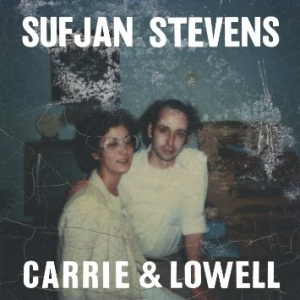Today I finished reading “That’s Not English: Britishisms, Americanisms, and What Our English Says About Us” by Erin Moore
Paper – Function-Described Graphs for Structural Pattern Recognition
Today I read a paper titled “Function-Described Graphs for Structural Pattern Recognition”
The abstract is:
We present in this article the model Function-described graph (FDG), which is a type of compact representation of a set of attributed graphs (AGs) that borrow from Random Graphs the capability of probabilistic modelling of structural and attribute information.
We define the FDGs, their features and two distance measures between AGs (unclassified patterns) and FDGs (models or classes) and we also explain an efficient matching algorithm.
Two applications of FDGs are presented: in the former, FDGs are used for modelling and matching 3D-objects described by multiple views, whereas in the latter, they are used for representing and recognising human faces, described also by several views.
Paper – Affordable Virtual Reality System Architecture for Representation of Implicit Object Properties
Today I read a paper titled “Affordable Virtual Reality System Architecture for Representation of Implicit Object Properties”
The abstract is:
A flexible, scalable and affordable virtual reality software system architecture is proposed.
This solution can be easily implemented on different hardware configurations: on a single computer or on a computer cluster.
The architecture is aimed to be integrated in the workflow for solving engineering tasks and oriented towards presenting implicit object properties through multiple sensorial channels (visual, audio and haptic).
Implicit properties represent hidden object features (i.e.
magnetization, radiation, humidity, toxicity, etc.) which cannot be perceived by the observer through his or her senses but require specialized equipment in order to expand the sensory ability of the observer.
Our approach extends the underlying general scene graph structure incorporating additional effects nodes for implicit properties representation.
Paper – Multicommand Tactile Brain Computer Interface based on Fingertips or Head Stimulation
Today I read a paper titled “Multicommand Tactile Brain Computer Interface based on Fingertips or Head Stimulation”
The abstract is:
The paper presents results from a computational neuroscience study conducted to test vibrotactile stimuli delivered to subject fingertips and head areas in order to evoke the somatosensory brain responses utilized in a haptic brain computer interface (hBCI) paradigm.
We present the preliminary and very encouraging results, with subjects conducting online hBCI interfacing experiments, ranging from 40% to 90% with a very fast inter-stimulus-interval (ISI) of 250ms.
The presented results confirm our hypothesis that the hBCI paradigm concept is valid and it allows for rapid stimuli presentation in order to achieve a satisfactory information-transfer-rate of the novel BCI.
Mock me, mock my money
Over the past three years I’ve had a few acquaintances snidely mock me and my life because I have an agent that represents me. They gloat of how foolish I am to pay this agent to represent me when negotiating a business deal when I could be easily negotiating for myself and pocketing that percentage.
Each night, as I lay down my head from another weary day, I gently cry myself to sleep whilst I lay on a big pile of cash.**
** I don’t actually sleep on a big pile of cash. Money smells of old gym socks and can be uncomfortable. I leave all that cash in an interest bearing account, working hard for me while I sleep in until 11AM every week day, long after those self-same acquaintances have gone off to their boring 9-to-5 jobs in cubicle hell.
Listening – Music Complete

This week I am listening to “Music Complete” by New Order
Paper – It’s about time: Online Macrotask Sequencing in Expert Crowdsourcing
Today I read a paper titled “It’s about time: Online Macrotask Sequencing in Expert Crowdsourcing”
The abstract is:
We introduce the problem of Task Assignment and Sequencing (TAS), which adds the timeline perspective to expert crowdsourcing optimization.
Expert crowdsourcing involves macrotasks, like document writing, product design, or web development, which take more time than typical binary microtasks, require expert skills, assume varying degrees of knowledge over a topic, and require crowd workers to build on each other’s contributions.
Current works usually assume offline optimization models, which consider worker and task arrivals known and do not take into account the element of time.
Realistically however, time is critical: tasks have deadlines, expert workers are available only at specific time slots, and worker/task arrivals are not known a-priori.
Our work is the first to address the problem of optimal task sequencing for online, heterogeneous, time-constrained macrotasks.
We propose tas-online, an online algorithm that aims to complete as many tasks as possible within budget, required quality and a given timeline, without future input information regarding job release dates or worker availabilities.
Results, comparing tas-online to four typical benchmarks, show that it achieves more completed jobs, lower flow times and higher job quality.
This work has practical implications for improving the Quality of Service of current crowdsourcing platforms, allowing them to offer cost, quality and time improvements for expert tasks.
Studying – Baking Mastery Chocolate, confections and centerpieces
This month I am studying “Baking Mastery – Chocolate, confections and centerpieces”
48 months part-time. 34th month
I wonder if I could convince my wife to move to Chicago for a few months so I could study at the local pastry school there.
Listening – Depression Cherry

This week I am listening to “Depression Cherry” by Beach House
Paper – Single-Image Depth Perception in the Wild
Today I read a paper titled “Single-Image Depth Perception in the Wild”
The abstract is:
This paper studies single-image depth perception in the wild, i.e., recovering depth from a single image taken in unconstrained settings.
We introduce a new dataset “Depth in the Wild” consisting of images in the wild annotated with relative depth between pairs of random points.
We also propose a new algorithm that learns to estimate metric depth using annotations of relative depth.
Compared to the state of the art, our algorithm is simpler and performs better.
Experiments show that our algorithm, combined with existing RGB-D data and our new relative depth annotations, significantly improves single-image depth perception in the wild.
The “You Had To Be There” Episode
My wife purchased a new laptop satchel/messenger bag a couple of days ago.
The tag on the side said it was “Kahkai” coloured.
So my wife and me, being who we are, latched on to the “Kahkai” and have been crowing it loudly like the Snipe in the Pixar film Up! ever since.
I have a very nice green-ish/tan camera bag made by Pelican that my wife wants to take with her on a trip.
She asks “Do you know where the Pellegrino bag is?”
“Do you mean the KAHKAI! one?” I ask.
“Wait I mean the Penguin bag. Uh Pellegrino bag. Is it Penguin or Pellegrino?”
“Pelican.”
“I sound like an ijit.” she responded.
“The KAKHAI! Pellgrino bag is below the printer. The Penguin bag is behind the door.” I smiled.
No really, it was immensely funny. You should’ve been there.
And when I try to explain to people what “love” is, this is it.
It is “us.”
And people who have never experienced a moment of “us” with another person don’t really understand what it means to connect with another person deeply enough that the stupidest joke makes complete sense.
KAKHAI!
IKEA $40 knife rack

If the singular of geese is goose, then is the singular of sheep, shoop?
Finally got around to hooking up my Leap Motion to the HTC Vive (never seemed to find the time).
Starting to tinker with building something in Unity now.
So far I have a virtual sheep shearing toy that lets you shear off the wool.
I am thinking a VR Hairdresser game…
What?
Don’t look at me like that.
It’s better than my first idea that was an for doing VR Bull/Cow Impregnation.
It did not test well with my audience (my wife) who couldn’t stop laughing long enough for me to finish my pitch.
Read – Astronomy Demystified
Today I finished reading “Astronomy Demystified” by Stan Gibilisco
Read – Clojure Programming
Today I finished reading “Clojure Programming” by Chas Emerick
Listening – Never Were The Way She Was

This week I am listening to “Never Were The Way She Was” by Colin Stetson & Sarah Neufeld
Paper – Footprint-Driven Locomotion Composition
Today I read a paper titled “Footprint-Driven Locomotion Composition”
The abstract is:
One of the most efficient ways of generating goal-directed walking motions is synthesising the final motion based on footprints.
Nevertheless, current implementations have not examined the generation of continuous motion based on footprints, where different behaviours can be generated automatically.
Therefore, in this paper a flexible approach for footprint-driven locomotion composition is presented.
The presented solution is based on the ability to generate footprint-driven locomotion, with flexible features like jumping, running, and stair stepping.
In addition, the presented system examines the ability of generating the desired motion of the character based on predefined footprint patterns that determine which behaviour should be performed.
Finally, it is examined the generation of transition patterns based on the velocity of the root and the number of footsteps required to achieve the target behaviour smoothly and naturally.
Read – Optimism Sounds Exhausting
Today I finished reading “Optimism Sounds Exhausting” by Scott Adams
Paper – Multilinear Wavelets: A Statistical Shape Space for Human Faces
Today I read a paper titled “Multilinear Wavelets: A Statistical Shape Space for Human Faces”
The abstract is:
We present a statistical model for $3$D human faces in varying expression, which decomposes the surface of the face using a wavelet transform, and learns many localized, decorrelated multilinear models on the resulting coefficients.
Using this model we are able to reconstruct faces from noisy and occluded $3$D face scans, and facial motion sequences.
Accurate reconstruction of face shape is important for applications such as tele-presence and gaming.
The localized and multi-scale nature of our model allows for recovery of fine-scale detail while retaining robustness to severe noise and occlusion, and is computationally efficient and scalable.
We validate these properties experimentally on challenging data in the form of static scans and motion sequences.
We show that in comparison to a global multilinear model, our model better preserves fine detail and is computationally faster, while in comparison to a localized PCA model, our model better handles variation in expression, is faster, and allows us to fix identity parameters for a given subject.
Read – Wodehouse on Crime
Today I finished reading “Wodehouse on Crime” by P.G. Wodehouse
Read – Pieces 6: Hellcat
Today I finished reading “Pieces 6: Hellcat” by Masamune Shirow
Paper – Motion Planning Of an Autonomous Mobile Robot Using Artificial Neural Network
Today I read a paper titled “Motion Planning Of an Autonomous Mobile Robot Using Artificial Neural Network”
The abstract is:
The paper presents the electronic design and motion planning of a robot based on decision making regarding its straight motion and precise turn using Artificial Neural Network (ANN).
The ANN helps in learning of robot so that it performs motion autonomously.
The weights calculated are implemented in microcontroller.
The performance has been tested to be excellent.
Listening – Hand. Cannot. Erase.

This week I am listening to “Hand. Cannot. Erase.” by Steven Wilson
Paper – Learning to Track at 100 FPS with Deep Regression Networks
Today I read a paper titled “Learning to Track at 100 FPS with Deep Regression Networks”
The abstract is:
Machine learning techniques are often used in computer vision due to their ability to leverage large amounts of training data to improve performance.
Unfortunately, most generic object trackers are still trained from scratch online and do not benefit from the large number of videos that are readily available for offline training.
We propose a method for using neural networks to track generic objects in a way that allows them to improve performance by training on labeled videos.
Previous attempts to use neural networks for tracking are very slow to run and not practical for real-time applications.
In contrast, our tracker uses a simple feed-forward network with no online training required, allowing our tracker to run at 100 fps during test time.
Our tracker trains from both labeled video as well as a large collection of images, which helps prevent overfitting.
The tracker learns generic object motion and can be used to track novel objects that do not appear in the training set.
We test our network on a standard tracking benchmark to demonstrate our tracker’s state-of-the-art performance.
Our network learns to track generic objects in real-time as they move throughout the world.
Paper – Real-time High Resolution Fusion of Depth Maps on GPU
Today I read a paper titled “Real-time High Resolution Fusion of Depth Maps on GPU”
The abstract is:
A system for live high quality surface reconstruction using a single moving depth camera on a commodity hardware is presented.
High accuracy and real-time frame rate is achieved by utilizing graphics hardware computing capabilities via OpenCL and by using sparse data structure for volumetric surface representation.
Depth sensor pose is estimated by combining serial texture registration algorithm with iterative closest points algorithm (ICP) aligning obtained depth map to the estimated scene model.
Aligned surface is then fused into the scene.
Kalman filter is used to improve fusion quality.
Truncated signed distance function (TSDF) stored as block-based sparse buffer is used to represent surface.
Use of sparse data structure greatly increases accuracy of scanned surfaces and maximum scanning area.
Traditional GPU implementation of volumetric rendering and fusion algorithms were modified to exploit sparsity to achieve desired performance.
Incorporation of texture registration for sensor pose estimation and Kalman filter for measurement integration improved accuracy and robustness of scanning process.
Read – Spring Fever
Today I finished reading “Spring Fever” by P.G. Wodehouse
Read – Dodger’s Guide to London
Today I finished reading “Dodger’s Guide to London” by Terry Pratchett
Daily driver
I dropped $3,000 (before tax) on an office chair yesterday.
I need to have my head examined.
Damn fine comfy chair though.
Read – Game Audio Programming
Today I finished reading “Game Audio Programming: Principles and Practices” by Guy Somberg
Listening – Poison Season

This week I am listening to “Poison Season” by Destroyer
Paper – Detecting Engagement in Egocentric Video
Today I read a paper titled “Detecting Engagement in Egocentric Video”
The abstract is:
In a wearable camera video, we see what the camera wearer sees.
While this makes it easy to know roughly what he chose to look at, it does not immediately reveal when he was engaged with the environment.
Specifically, at what moments did his focus linger, as he paused to gather more information about something he saw? Knowing this answer would benefit various applications in video summarization and augmented reality, yet prior work focuses solely on the “what” question (estimating saliency, gaze) without considering the “when” (engagement).
We propose a learning-based approach that uses long-term egomotion cues to detect engagement, specifically in browsing scenarios where one frequently takes in new visual information (e.g., shopping, touring).
We introduce a large, richly annotated dataset for ego-engagement that is the first of its kind.
Our approach outperforms a wide array of existing methods.
We show engagement can be detected well independent of both scene appearance and the camera wearer’s identity.
Let’s go hunting!
One of the metrics I use to determine if we are having a tech bubble is the amount of snark I have to delete from my reply emails for me to maintain a proper level of professionalism.
Studying – Baking Mastery European cakes and tortes
This month I am studying “Baking Mastery – European cakes and tortes”
48 months part-time. 32nd month and 33rd month. Speeding it back up. I’m feeling more confident this month.
Paper – Human-Recognizable Robotic Gestures
Today I read a paper titled “Human-Recognizable Robotic Gestures”
The abstract is:
For robots to be accommodated in human spaces and in humans daily activities, robots should be able to understand messages from the human conversation partner.
In the same light, humans must also understand the messages that are being communicated by robots, including the non-verbal ones.
We conducted a web-based video study wherein participants gave interpretations on the iconic gestures and emblems that were produced by an anthropomorphic robot.
Out of the 15 gestures presented, we found 6 robotic gestures that can be accurately recognized by the human observer.
These were nodding, clapping, hugging, expressing anger, walking, and flying.
We reviewed these gestures for their meaning from literatures in human and animal behavior.
We conclude by discussing the possible implications of these gestures for the design of social robots that are aimed to have engaging interactions with humans.
Listening – Carrie & Lowell

This week I am listening to “Carrie & Lowell” by Sufjan Stevens
Watching – From Bedrooms To Billions – The Amiga Years

From Bedrooms To Billions – The Amiga Years
Today I watched “From Bedrooms to Billions – The Amiga Years”
Just got done watching this documentary, and apart from the bad 80’s rock music celebrating a product, it was a fun run through my youthful memories and the changing games industry.
During those years Peter Molyneux was one of my game design heroes. Wish I had gotten the opportunity to work with him during that period.

Peter Molyneux
Paper – Weighted Unsupervised Learning for 3D Object Detection
Today I read a paper titled “Weighted Unsupervised Learning for 3D Object Detection”
The abstract is:
This paper introduces a novel weighted unsupervised learning for object detection using an RGB-D camera.
This technique is feasible for detecting the moving objects in the noisy environments that are captured by an RGB-D camera.
The main contribution of this paper is a real-time algorithm for detecting each object using weighted clustering as a separate cluster.
In a preprocessing step, the algorithm calculates the pose 3D position X, Y, Z and RGB color of each data point and then it calculates each data point’s normal vector using the point’s neighbor.
After preprocessing, our algorithm calculates k-weights for each data point; each weight indicates membership.
Resulting in clustered objects of the scene.
Paper – Consciousness is Pattern Recognition
Today I read a paper titled “Consciousness is Pattern Recognition”
The abstract is:
This is a proof of the strong AI hypothesis, i.e.
that machines can be conscious.
It is a phenomenological proof that pattern-recognition and subjective consciousness are the same activity in different terms.
Therefore, it proves that essential subjective processes of consciousness are computable, and identifies significant traits and requirements of a conscious system.
Since Husserl, many philosophers have accepted that consciousness consists of memories of logical connections between an ego and external objects.
These connections are called “intentions.” Pattern recognition systems are achievable technical artifacts.
The proof links this respected introspective philosophical theory of consciousness with technical art.
The proof therefore endorses the strong AI hypothesis and may therefore also enable a theoretically-grounded form of artificial intelligence called a “synthetic intentionality,” able to synthesize, generalize, select and repeat intentions.
If the pattern recognition is reflexive, able to operate on the set of intentions, and flexible, with several methods of synthesizing intentions, an SI may be a particularly strong form of AI.
Similarities and possible applications to several AI paradigms are discussed.
The article then addresses some problems: The proof’s limitations, reflexive cognition, Searles’ Chinese room, and how an SI could “understand” “meanings” and “be creative.” .
Quite Bold Wielder
I have a small USB charging cable. Measures about two inches long. Lightning connector, Apple dock connector, mini USB, micro USB, USB-C.
I call it my “precious.”
“Why do you call it your precious?” asked the coffee shop acquaintance at the conference I am attending.
“Because it is such a small thing. And with it, the wielder can convey great power.” I said in my best Sean Bean accent.
“Ohmigod, you are *SUCH* a dork. You’re probably still single.” she responded.
A few hours later she walked up to where I was perched on a railing and chatting with another conference attendee, without formal introduction or pause she interjects “I need that charging cable for my iPhone.”
I turned slowly. “Sorry, I’m a dork. Remember?”
I am just so edgy some days.
The response, to maintain the professionalism of this website, is unprintable.
On another note, what kind of young lady goes out of her way to refer to a professionally attired businessman at a technology conference as a “dork?”
Read – Stop Stealing Dreams
Today I finished reading “Stop Stealing Dreams” by Seth Godin
Read – Email Marketing: Effective Email Marketing
Today I finished reading “Email Marketing: Effective Email Marketing: The Ultimate Guide to Monetizing Your Email Marketing Strategy” by Sam A. Brown
Listening – Holding Hands With Jamie

This week I am listening to “Holding Hands With Jamie” by Girl Band
Read – Bill Gates: The Life and Business Lessons of Bill Gates
Today I finished reading “Bill Gates: The Life and Business Lessons of Bill Gates” by George Ilian
Paper – Unethical Research: How to Create a Malevolent Artificial Intelligence
Today I read a paper titled “Unethical Research: How to Create a Malevolent Artificial Intelligence”
The abstract is:
Cybersecurity research involves publishing papers about malicious exploits as much as publishing information on how to design tools to protect cyber-infrastructure.
It is this information exchange between ethical hackers and security experts, which results in a well-balanced cyber-ecosystem.
In the blooming domain of AI Safety Engineering, hundreds of papers have been published on different proposals geared at the creation of a safe machine, yet nothing, to our knowledge, has been published on how to design a malevolent machine.
Availability of such information would be of great value particularly to computer scientists, mathematicians, and others who have an interest in AI safety, and who are attempting to avoid the spontaneous emergence or the deliberate creation of a dangerous AI, which can negatively affect human activities and in the worst case cause the complete obliteration of the human species.
This paper provides some general guidelines for the creation of a Malevolent Artificial Intelligence (MAI).
Read – Blue Champagne
Today I finished reading “Blue Champagne” by John Varley
Read – Dragons at Crumbling Castle: And Other Stories
Today I finished reading “Dragons at Crumbling Castle: And Other Stories” by Terry Pratchett
Read – Unemployable!
Today I finished reading “Unemployable!” by David Thomas Roberts
Listening – Thank Your Lucky Stars

This week I am listening to “Thank Your Lucky Stars” by Beach House
Read – The Knight and Knave of Swords
Today I finished reading “The Knight and Knave of Swords” by Fritz Leiber
Paper – Multi-modal Sensor Registration for Vehicle Perception via Deep Neural Networks
Today I read a paper titled “Multi-modal Sensor Registration for Vehicle Perception via Deep Neural Networks”
The abstract is:
The ability to simultaneously leverage multiple modes of sensor information is critical for perception of an automated vehicle’s physical surroundings.
Spatio-temporal alignment of registration of the incoming information is often a prerequisite to analyzing the fused data.
The persistence and reliability of multi-modal registration is therefore the key to the stability of decision support systems ingesting the fused information.
LiDAR-video systems like on those many driverless cars are a common example of where keeping the LiDAR and video channels registered to common physical features is important.
We develop a deep learning method that takes multiple channels of heterogeneous data, to detect the misalignment of the LiDAR-video inputs.
A number of variations were tested on the Ford LiDAR-video driving test data set and will be discussed.
To the best of our knowledge the use of multi-modal deep convolutional neural networks for dynamic real-time LiDAR-video registration has not been presented.